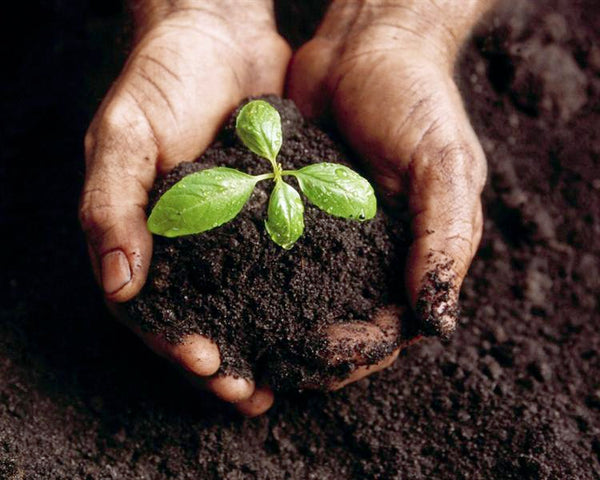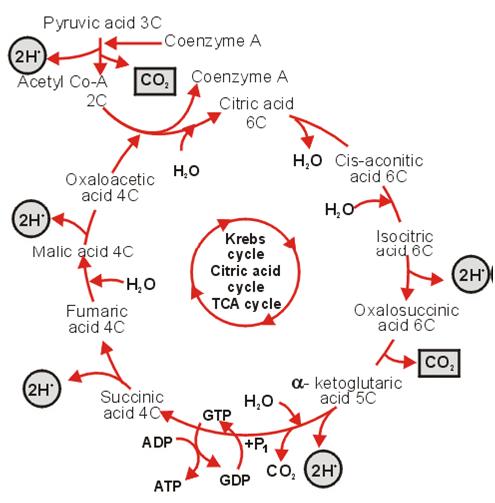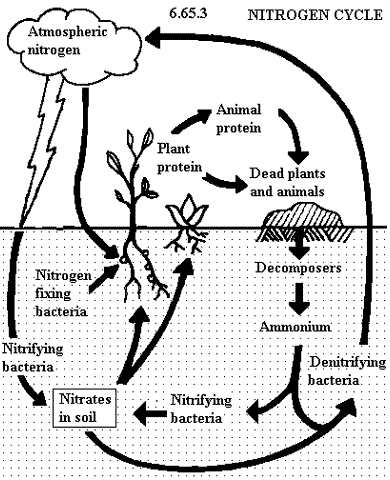
Composting can be as simple or as complicated as you want to make it. You really only need three things: carbon materials (browns), nitrogen materials (greens) and a little bit of time.
COLD COMPOSTING VERSUS HOT COMPOSTING
There are two main methods for composting: hot and cold. Cold composting is simply building a pile of compost materials and leaving it to sit. A majority of the composting work is done by macroorganisms such as beetles, sow bugs, ants and worms. Cold composting is a slow process that doesn’t require perfect conditions or much in the way of labor. But since the temperatures never get hot enough to kill seeds or pathogens, you will likely get weeds and could potentially introduce disease into your garden’s soil.
Hot composting on the other hand is an active process in which you create specific conditions that will promote an active, diverse living environment in your compost pile. Micro and macro organisms work together to break down and metabolize all of the base materials. This elevates the temperature of the pile through specific phases of decomposition until all of the materials have been utilized and the temperature drops back down. The resulting rich, loamy mix of organic material can be ready to supplement your soil in as little as 18 days.
MACROORGANISMS

Macroorganisms break down the large, course materials as well as feed on microorganisms and each other. This increases the surface area of the material (creating more living space for microorganisms) and starts the decomposition process.
Some common macroorganisms you will find in a typical pile:
- Sow bugs “rolly pollies”: Feed on rotting wood and vegetation
- Earthworms: Feed on any organic matter, their castings are very rich in nitrogen, calcium and magnesium
- Beetles: Larva eat decaying veggies / plant matter. Adults eat slugs, snails and other small critters.
MICROORGANISMS
Microorganisms such as bacteria, fungi, and actinomycetes account for most of the decomposition that takes place in a pile. Bacterial decomposition is a chemical process. As with all chemistry, it requires specific elements in specific ratios in order to efficiently proceed through each phase of the reaction. The key elements in a compost pile are carbon, nitrogen, water and oxygen.
There are two main categories of bacteria at work in the pile. Aerobic bacteria, which metabolize in the presence of oxygen, and anaerobic bacteria which do not need oxygen to thrive. Anaerobics work more slowly and produce hydrogen sulfide, cadaverine and putrescine (smelly odors) as byproducts while not elevating the temperature of the pile high enough to kill unwanted seeds. Because of this, it is important to introduce enough oxygen (O2 levels greater than 5%) into the pile to promote the aerobic bacteria to take over, displacing the anaerobics and driving fast, hot decomposition in which the bacteria metabolize the compost and excrete nitrogen, phosphorous and magnesium that is readily available for use by the plants in your garden.
CARBON
As stated previously, bacterial decomposition is a chemical process. Aerobic bacteria decompose using the same cellular respiration and metabolism processes as the majority of all living creatures on earth. In this process, carbon is the chemical energy source. The carbon comes in forms of sugars (carbon, hydrogen and oxygen molecules) that are the byproducts of the broken down starches, cellulose and other structural materials of plant matter. The carbon levels are especially high in “brown” materials such as leaves, cardboard, woody stems and sawdust.

All living cells use ATP as the energy transport mechanism. ATP is produced through the breakdown of sugars (carbon molecules) through a chemical process called glycolysis. During glycolysis, the glucose (6 carbon atoms) is converted into Pyruvate (3 carbon atoms per molecule) releasing stored energy in the form of ATP for use by the microorganisms. Following glycolysis, the remaining carbon is metabolized through the Krebs cycle (aerobic fermentation) in which the Pyruvate is broken down into CO2 (1 carbon atom per molecule) and the enzyme NADH. Finally, during oxidative phosphorylation oxygen is used to convert the excess NADH back into the enzyme NAD, releasing water and more ATP for use by the cells.
NITROGEN

Nitrogen is a key component of the amino acids that are the building blocks of all proteins. Proteins comprise the structure of the bacteria and allow them to grow and reproduce. The aerobic bacteria that are active within your compost pile draw nitrogen from the decaying plant matter and ammonia compounds in the soil (such as from urea contained in animal manure). They convert it into nitrites as part of their metabolic growth as well as incorporate it into their physical structure. The byproduct of this bacterial life, growth and death is bioavailable nitrogen in the form of nitrates.
C TO N RATIO
Maintaining the proper ratio of carbon to nitrogen is important in order to promote the efficient growth and replication of the best aerobic bacteria for the composting process. Too much nitrogen material can cause an overabundance of anaerobic bacteria, keep temperatures low, smelliness up and slow the composting process. Too much carbon material (which also tends to have a low moisture content) will also slow the composting process significantly since there isn’t enough nitrogen available for the bacteria to reproduce and utilize the available energy contained in the brown materials. The low moisture content further prevents replication since the ideal environment for bacterial growth tends to be within a thin moisture layer on the surface of the organic matter.
A C-N ratio of 25:1 to 30:1 is best ratio for quick decomposition. While it isn’t necessary to be exact with your calculation (typically a 50% greens to 50% browns will work out to about the right overall ratio), getting as close to possible to the ideal range will optimize the breakdown of material, promote the best temperatures to kill seed and pathogens and speed the composting process.
The following table provides typical C to N ratios of common compost materials:
| MATERIAL | C:N RATIO |
| Corn stalks | 50-100:1 |
| Fruit waste | 35:1 |
| Grass clippings | 12-25:1 |
| Hay, green | 25:1 |
| Leaves, ash, black elder and elm | 21-28:1 |
| Leaves, pine | 60-100:1 |
| Leaves, other | 30-80:1 |
| Manure, horse and cow | 20-25:1 |
| Paper | 170-200:1 |
| Sawdust | 200-500:1 |
| Seaweed | 19:1 |
| Straw | 40-100:2 |
| Vegetable waste | 12-25:1 |
| Weeds | 25:1 |
| Wood chips | 500-700:1 |
COMPOSTING PHASES
There are three main phases that the compost goes through which are differentiated by the temperature of the pile and therefore the type of bacteria that are most active at each temperature.
The psychrophilic/mesophilic phase lasts about 2-3 days and is characterized by temperatures in the 55°F to 100°F range. Psychrophilic are most active when the pile is 55°F – 70°F. Once the internal temperature rises above 70°F, the mesophilic bacteria take over until about 100°F. During this phase, the bacteria in the pile begin to break down organic matter, producing acids, CO2 and heat. As the heat builds in the pile, the bacteria begin to die off, paving the way for the next phase of decomposition by the heat loving or thermophilic bacteria.
The thermophilic phase is characterized by temperatures in the range of 113°F to 160°F and lasts for approximately 3-5 days. Over this period the temperature continues to rise until stabilizing between 130°F and 140°F. Temps of 140°F + kill pathogens and seeds. Once the temperature rises above 140°F the thermophilic bacteria begin to die off and the pile will begin to cool. If the pile gets too hot (160°F and above) it can become sterilized and the compost will actually lose some of its natural disease fighting capabilities.
The final phase is curing and maturation which occurs once the bacteria run low on food or oxygen and die off. During this phase, other organisms take over and break down any remaining organic matter into its constituent parts for easy utilization by the plants.
Actinomycetes are generally anaerobic bacteria which form filamentous links and branching growth which results in an extensive colony or clumps in the compost pile. They are best suited to moderate temperatures and break down lignin (helps form the main part of woody tissue, is the second most common component of terrestrial plants), cellulose, starches and proteins.
Fungi and molds are also active during the final phase and break down any remaining organic matter as well as cellulose and lignin.
BEST PRACTICES
- Build pile in one shot not over time
- In order for the composting process to start and the temperatures to increase you need to build you pile at one shot with the correct ratio of greens to browns. Store your kitchen scraps and other greens in a waste bin until you are ready to build the pile then combine the carbon material with the nitrogen material in alternating thin layers.
- Air needed for composting bacteria to thrive
- Turn the pile after the first thermophilic phase, when the temperature of the pile starts to drop. This will introduce air back into the pile and restart the heating process.
- Use course carbon materials and stack your materials loosely.
- Ensure you have proper ventilation by building your pile in open air or well ventilated box such as one made from pallets.
- Water
- Optimum range 40 to 60%
- Material should be damp to the touch
- Just a couple drops from squeezed handful
- Pile size should be ideally 1 meter by 1 meter by 1.5 meters high
- Insulates from heat loss and improves decomposition speed while remaining manageable for turning the pile
- Cooler areas will require bigger piles
BUILDING A THREE-PHASE COMPOSTING SYSTEM

As I stated at the beginning of this post, your composting system can be as simple or complex as you want to make it. If you are looking to build a three-bin system (a bin for each phase of the process), your structure can take on any form that will meet all of the above requirements. Good, inexpensive materials such as pallets work perfect.
The following link provides a great guideline for building a nice, pest-resistant composting system:
ADDITIONAL REFERENCES:
http://www.plantea.com/compost.htm
http://suite101.com/article/how-hot-composting-works–microbiology-a210094
http://deepgreenpermaculture.com/diy-instructions/hot-compost-composting-in-18-days/


